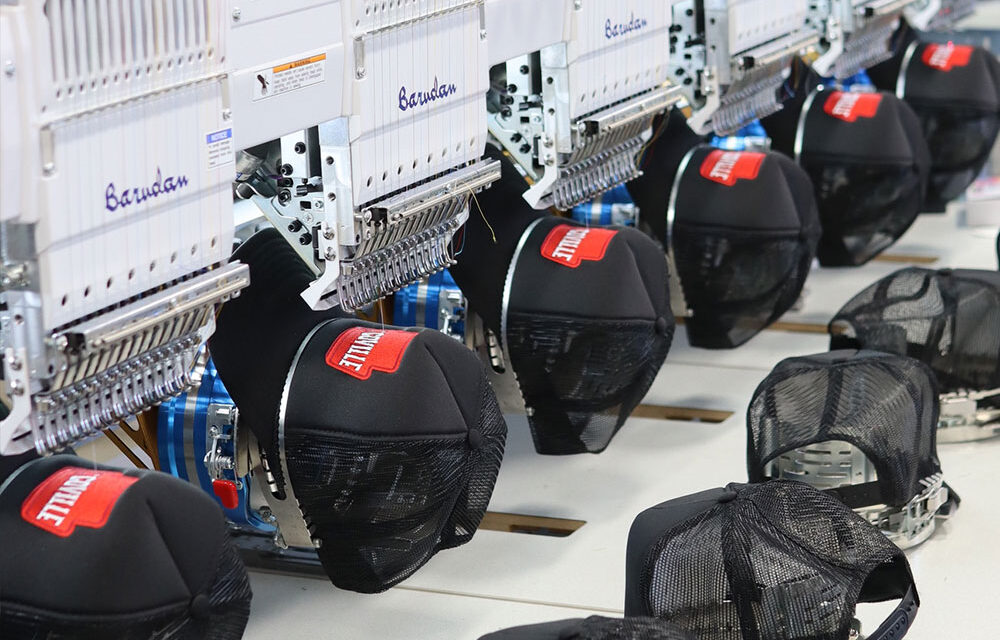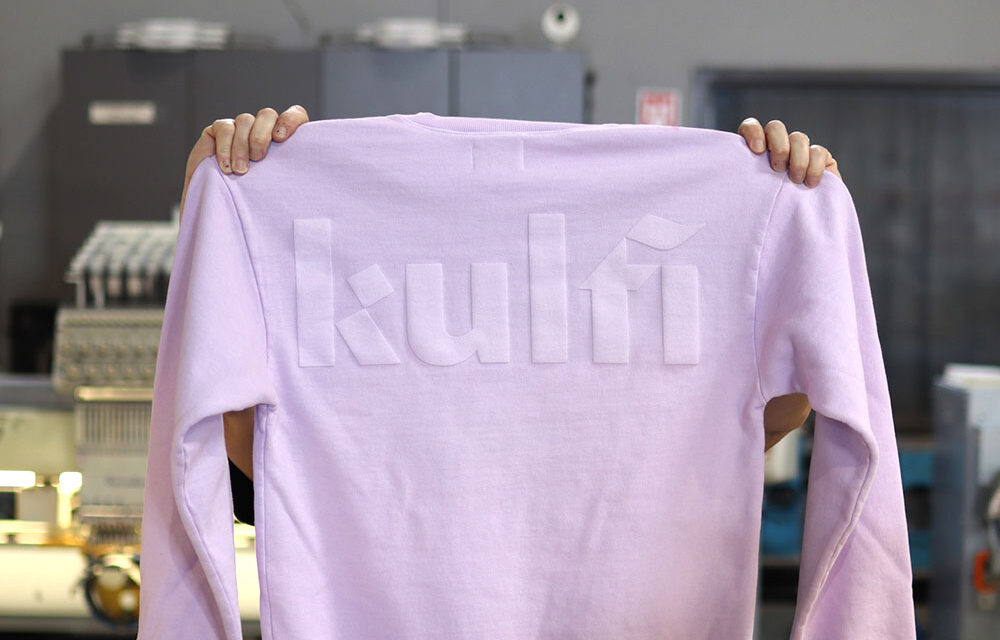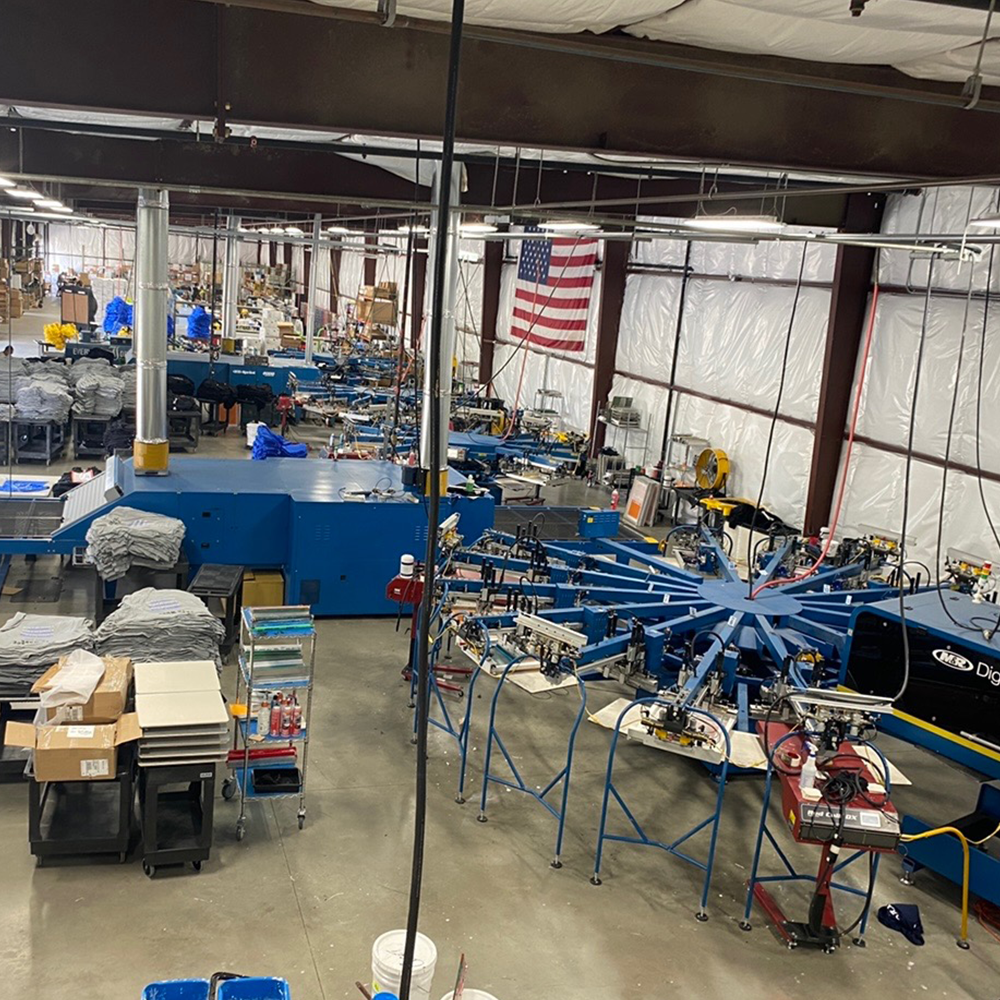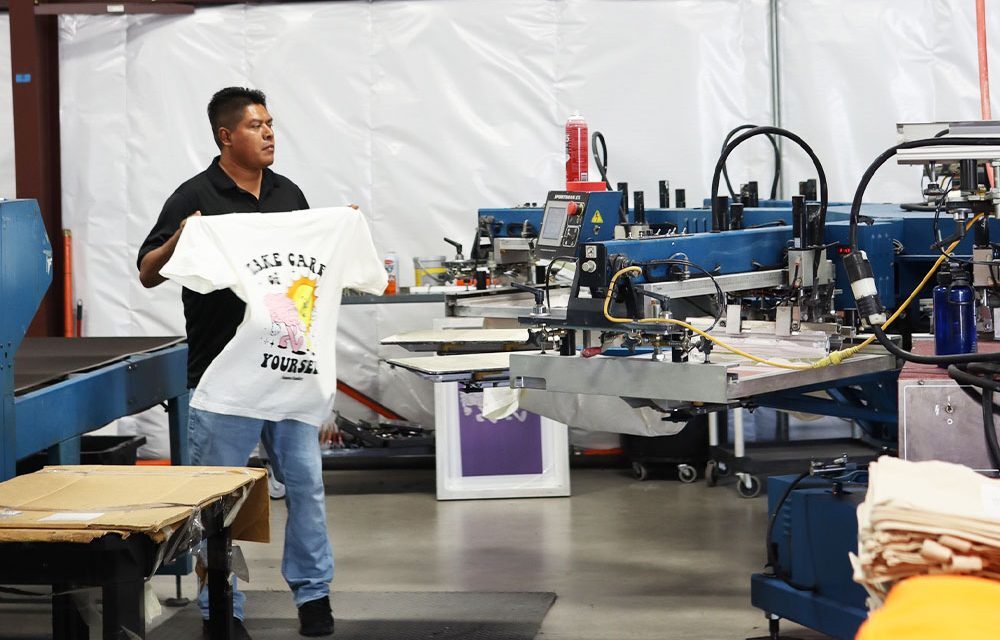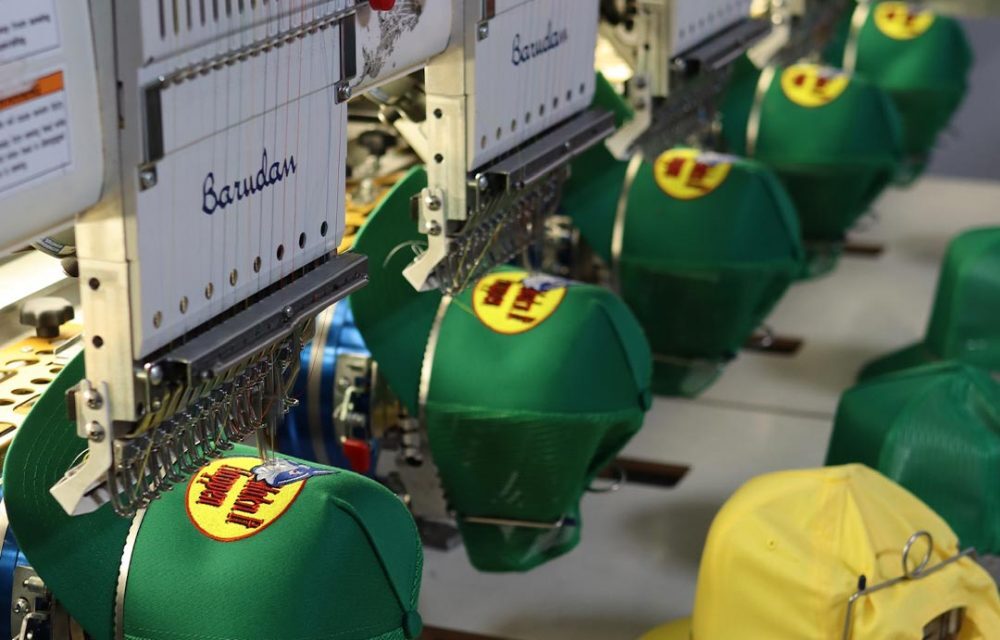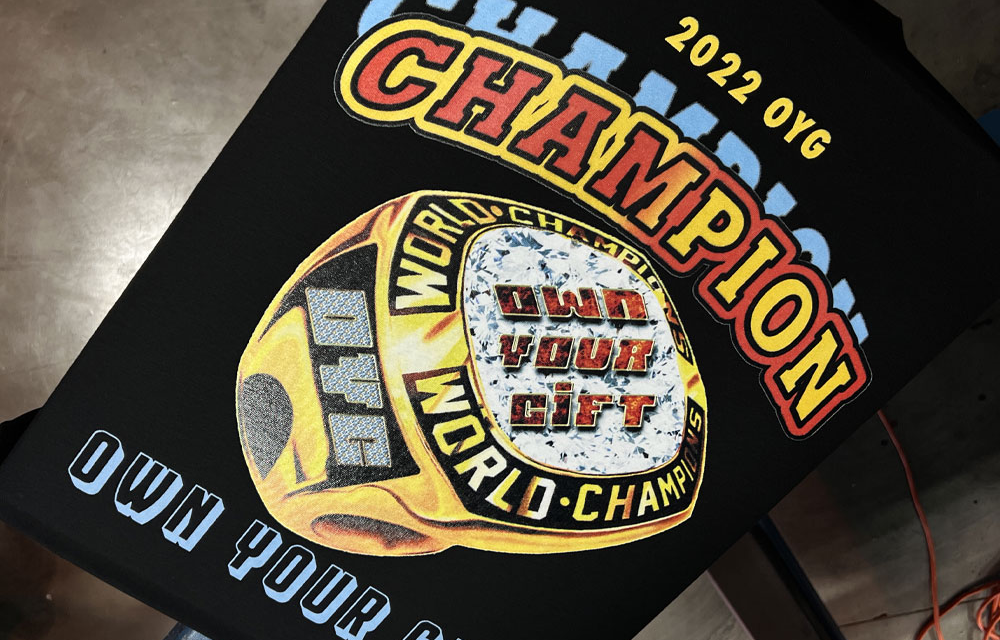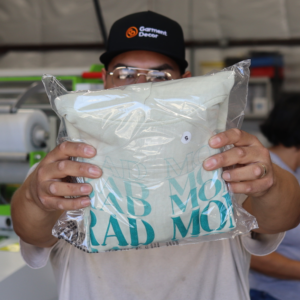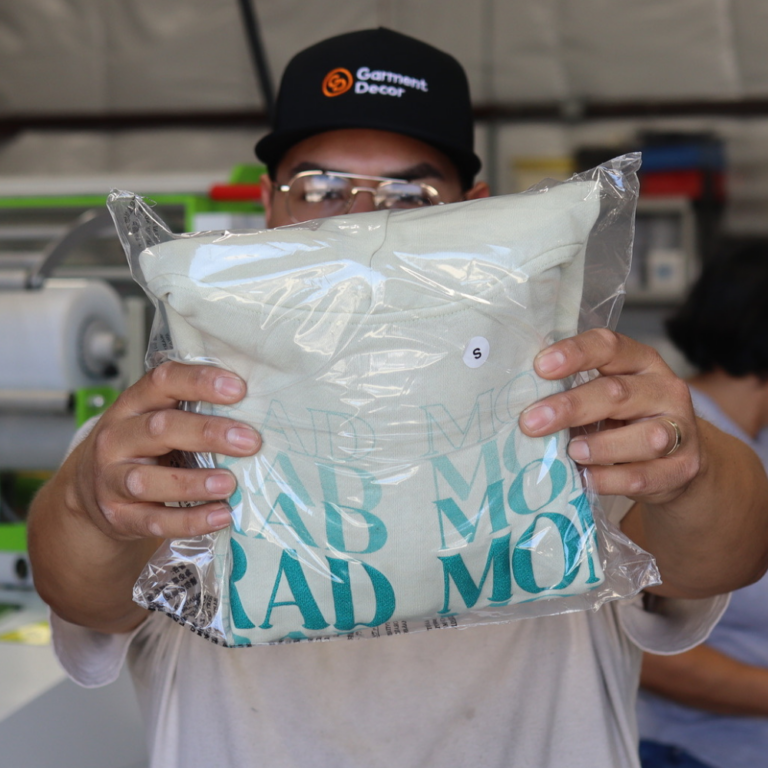Water-based screen printing has been gaining significant traction in the apparel decoration industry. This eco-friendly printing method is celebrated for its soft feel, vibrant colors, and environmental benefits. In this article, we will explore the advantages of water-based screen printing, the differences between water-based and plastisol inks, and why this method is becoming a favorite among print shops and customers alike.
What is Water-Based Screen Printing?
Water-based screen printing uses inks that are primarily composed of water, making them an environmentally friendly alternative to traditional inks. These inks penetrate the fabric rather than sitting on top, resulting in a softer feel and more breathable prints. This screen printing method is particularly popular for printing on light-colored fabrics, but advancements in technology have made it effective on darker materials as well.
Benefits of Water-Based Screen Printing Ink
- Soft Feel and Durability: One of the standout benefits of water-based screen printing ink is the soft hand it provides. Unlike plastisol inks, which can leave a thick, plastic-like layer on the fabric, water-based inks absorb into the fibers, creating a print that feels as soft as the fabric itself.
- Eco-Friendly: Water-based inks are more environmentally friendly than their plastisol counterparts. They do not contain harmful chemicals such as PVC or phthalates, making them a safer option for both the environment and the people involved in the printing process.
- Vibrant Colors: This screen printing type can achieve vibrant and rich colors, especially on light fabrics. The inks can also be layered to create complex designs with multiple colors.
The Process of Water-Based Screen Printing
Water-based screen printing is a popular method due to its environmental benefits and the soft feel of the finished product. Here’s a detailed explanation of the process:
- Design Preparation: The process begins with preparing the design that will be printed. This design is typically created using graphic design software and then converted into a stencil, known as a screen.
- Screen Creation: A screen is made by coating a mesh screen with a light-sensitive emulsion. Once the emulsion is dry, the design stencil is placed on the screen, and the screen is exposed to a light source. The light hardens the emulsion except where the design blocks it. The unexposed emulsion is then washed away, leaving a stencil of the design on the screen.
- Setting Up the Screen: The prepared screen is then mounted onto a screen printing press. The fabric or item to be printed is placed on the press underneath the screen.
- Applying the Ink: Water-based screen printing ink is then poured onto the screen. A squeegee is used to spread the ink across the screen, forcing it through the mesh openings where the emulsion was washed away, thereby transferring the design onto the fabric below.
- Ink Penetration: One of the unique aspects of water-based screen printing is that the ink penetrates the fabric fibers rather than sitting on top of them. This results in a print that is soft to the touch and breathable. Achieving this requires precise control, as the ink is thinner compared to plastisol inks.
- Curing the Ink: After the ink is applied, the fabric needs to be dried and cured to ensure the print is durable and long-lasting. This is usually done using a conveyor dryer, which exposes the printed fabric to high temperatures to set the ink. Proper curing is crucial as it ensures that the ink bonds well with the fabric fibers.
- Quality Check: Once the ink is cured, the printed items undergo a quality check to ensure the print is clear, vibrant, and consistent. Any imperfections are identified and corrected.
- Cleaning the Screen: After printing, the screen must be thoroughly cleaned to remove any residual ink and emulsion, preparing it for reuse.
Comparing Plastisol vs Water-Based Inks
When discussing plastisol vs water based inks, several factors come into play:
- Environmental Impact: Plastisol inks contain PVC and other harmful chemicals, whereas water based inks are largely free from toxic substances.
- Feel and Appearance: Prints made with water ink have a softer feel and a more natural look, as the ink integrates with the fabric. Plastisol inks, on the other hand, tend to create a more vibrant but less breathable print.
- Durability: While plastisol inks are known for their durability, advancements in water-based ink formulations have significantly improved their longevity, making them a viable option for long-lasting prints.
Applications of Water-Based Screen Printing
Water-based screen printing is ideal for a wide range of applications, including:
- Apparel: T-shirts, hoodies, and other clothing items benefit from the soft feel and breathability of water-based prints.
- Posters and Paper: The ability of water-based inks to create fine details makes them perfect for printing posters and other paper products.
- Eco-Friendly Brands: Brands that prioritize sustainability often choose water-based screen printing to align with their environmental values.
Conclusion
As the demand for eco-friendly products continues to rise, water-based screen printing offers a sustainable and high-quality solution for apparel decoration. By understanding the benefits and differences between water-based and plastisol inks, businesses can make informed decisions that not only enhance their product offerings but also contribute to a healthier planet. Whether you are a print shop looking to adopt more sustainable practices or a consumer seeking eco-friendly apparel, water-based screen printing stands out as a superior choice.
Read More: Sublimation Printing vs. Heat Transfer Vinyl: A Comprehensive Guide


